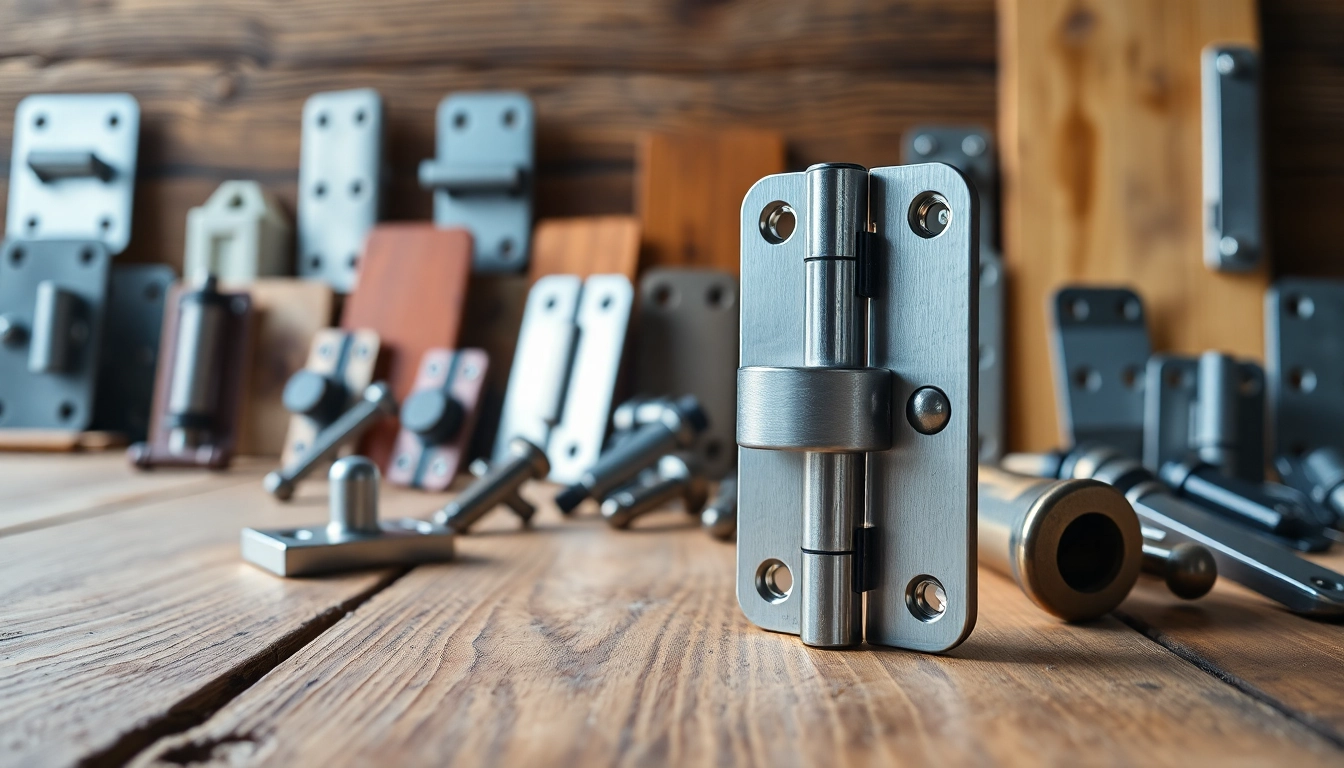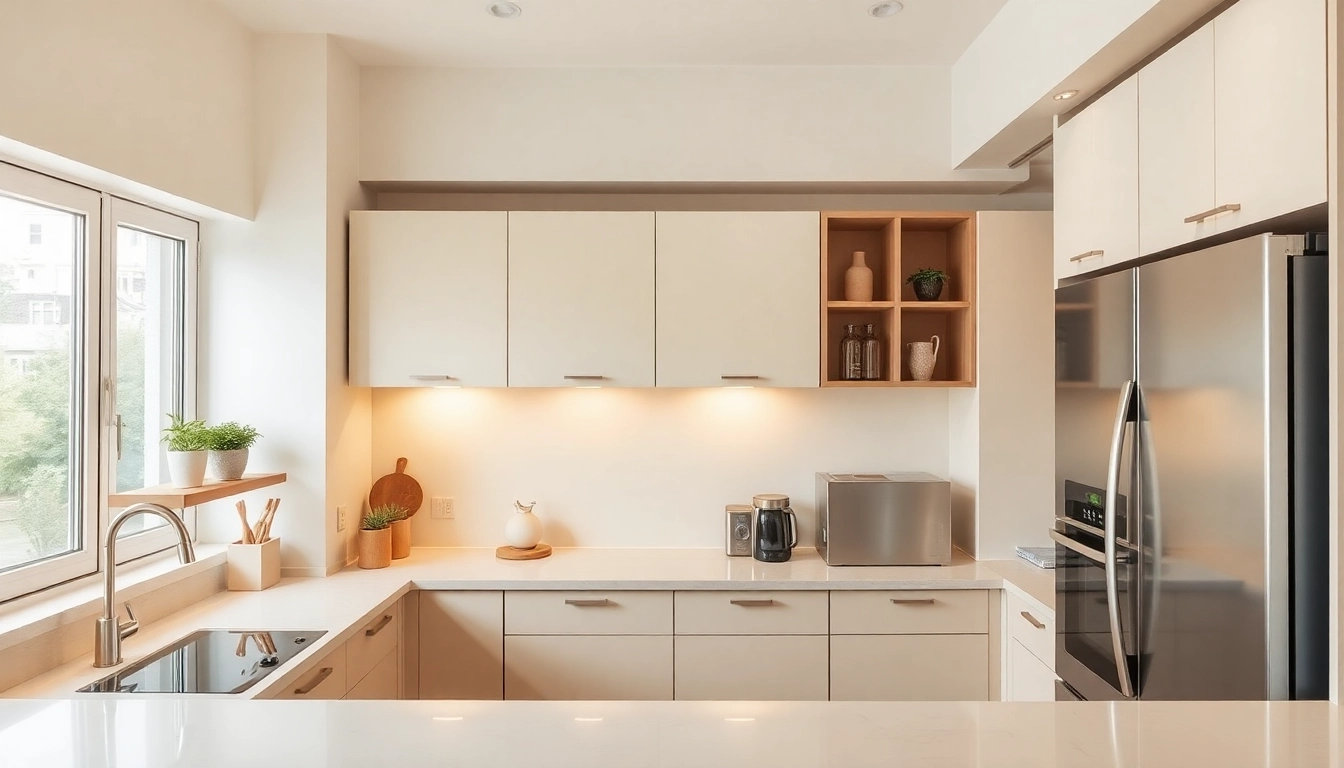Understanding Hinge Types
In the realm of construction and architecture, hinges play a pivotal role in functionality and aesthetics. Understanding the different types of hinges available in the market can significantly enhance both the performance of a door and the overall design of a space. Below, we explore various hinge types commonly available through a Hinge Supplier.
Residential Door Hinges
Residential door hinges are essential for the smooth operation of household doors. Typically made from materials such as steel, brass, or zinc, they are designed to support the weight of doors while allowing for easy movement. Common residential hinges include:
- Butt Hinges: The most common type of hinge, used for interior and exterior doors.
- Spring Hinges: Automatically close the door after it has been opened, often used for storm doors and screen doors.
- Continuous Hinges: Also known as piano hinges, these run the entire length of the door, providing increased strength and stability.
Commercial Door Hinges
For commercial applications, the demands on hinges become even more stringent. These hinges must accommodate higher traffic volumes and the heavier weights of commercial doors. Key hinge types include:
- Ball Bearing Hinges: Designed to handle significant wear and tear, these have ball bearings that reduce friction and wear on the hinge pins.
- Heavy-Duty Hinges: Built to support larger commercial doors, these are usually fabricated from thicker metal and can bear greater loads.
- Security Hinges: These are designed with added features to prevent tampering, ensuring increased security for entryways.
Specialty Hinges
Specialty hinges cater to unique applications and varying design requirements. They include:
- Pivot Hinges: Used for doors that require pivot points instead of traditional side hinges, allowing for a distinct swinging motion.
- Concealed Hinges: These remain hidden when the door is closed, providing a seamless look for cabinetry and high-end design applications.
- Euro Hinges: Commonly used in modern cabinetry, these allow for adjustable positioning of doors post-installation.
The Importance of Quality in Hinge Supply
When sourcing hinges, the quality of the products significantly impacts both functionality and longevity. Selecting a high-quality hinge can lead to fewer maintenance issues and improved overall performance.
Material Selection
The material used in hinge manufacturing is crucial for determining strength, durability, and resistance to environmental factors. Common materials include:
- Brass: Offers excellent corrosion resistance and a classic look, ideal for residential applications.
- Stainless Steel: Known for its strength and resistance to rust, perfect for high-traffic and outdoor environments.
- Zinc Alloy: Typically used in economically priced hinges, zinc alloy provides a reasonable balance of cost and durability.
Durability and Performance
The longevity of hinges directly correlates with their quality. Factors to consider include load-bearing capacity, resistance to environmental stressors (like moisture and salt), and the type of lubrication used in production. High-quality hinges are often tested for:
- Resistance to corrosion
- Load capacity under repeated stress
- Durability of coatings and finishes
Cost vs. Quality Analysis
While it might be tempting to opt for lower-priced hinges, this may lead to higher long-term costs due to replacement and maintenance. A thorough cost versus quality analysis can be beneficial. Here are key considerations:
- Initial Purchase Price
- Expected Lifespan and Warranty
- Maintenance Costs Over Time
Buying Guide for Hinge Suppliers
Sourcing hinges can be daunting, given the vast array of options available. Understanding your specific needs will ensure you make a well-informed purchase. The following guide outlines essential steps when selecting a hinge supplier.
Identifying Your Needs
Before approaching suppliers, evaluate the specific requirements for your project. Consider the following criteria:
- Type of door (interior vs. exterior)
- Weight of the door
- Frequency of use and expected wear
- Aesthetic preferences
Evaluating Supplier Options
Not all suppliers are created equal. When evaluating potential hinge suppliers, consider:
- Reputation and experience in the industry
- Range of products offered
- Certifications and compliance with industry standards
- Customer service and support options
Comparing Prices and Guarantees
Price should not be the only determining factor in selecting a hinge supplier. Consider their guarantees and warranties, which can provide added assurance of quality. Actions to take include:
- Requesting quotes from multiple suppliers
- Inquiring about warranties on products
- Assessing any additional costs, such as shipping and handling
Common Challenges in Hinge Sourcing
The journey to finding quality hinges is not without its challenges. Being aware of common pitfalls can save time and resources.
Supply Chain Issues
Delays in supply chains can hinder projects significantly. To mitigate risks, consider implementing practices such as:
- Maintaining a stock of commonly used hinges
- Building relationships with multiple suppliers to ensure backup options
- Monitoring global market trends that impact manufacturing and supplies
Understanding Compliance Standards
Many industries are governed by strict compliance standards that hinge manufacturers must adhere to. Familiarize yourself with the relevant standards in your area or sector to ensure:
- Hinges meet local building codes
- Products are safe and fit for use in the intended application
- Environmental regulations are considered
Dealing with Returns and Exchanges
Sometimes, the purchased hinges may not meet the project’s requirements once installed. Understanding the supplier’s returns policy is critical for addressing these situations. Recommendations include:
- Reviewing the supplier’s return policy before making a purchase
- Documenting the condition of the hinges upon receipt
- Communicating with customer service as needed to facilitate returns
Future Trends in Hinge Manufacturing
As technology advances, so too do the principles of hinge manufacturing. Staying abreast of trends can position you as a knowledgeable buyer poised to make informed decisions.
Technology and Innovation in Hinge Design
Modern engineering techniques have revolutionized hinge manufacturing. Innovations such as:
- 3D printing for custom hinges
- Smart hinges that include electronic features
- Enhanced design software allowing for custom specifications
These advancements are transforming how hinges are produced, offering customized solutions that meet specific client needs and preferences.
Eco-Friendly Materials
Increasingly, consumers are seeking sustainable options. Many hinge manufacturers are exploring eco-friendly materials such as recycled metals and biodegradable coatings. Notable innovations include:
- Hinges made from post-consumer recycled materials
- Water-based finishes that reduce environmental impact
- Durable products that extend lifespan, reducing waste
Customization and Client Needs
As the construction industry emphasizes unique designs and personalized aesthetics, the demand for custom hinge solutions is on the rise. Future trends suggest:
- Increased options for finishes and styles tailored to client specifications
- Advanced manufacturing techniques allowing for bespoke hinge designs
- Collaborative approaches between designers and manufacturers to co-create products



